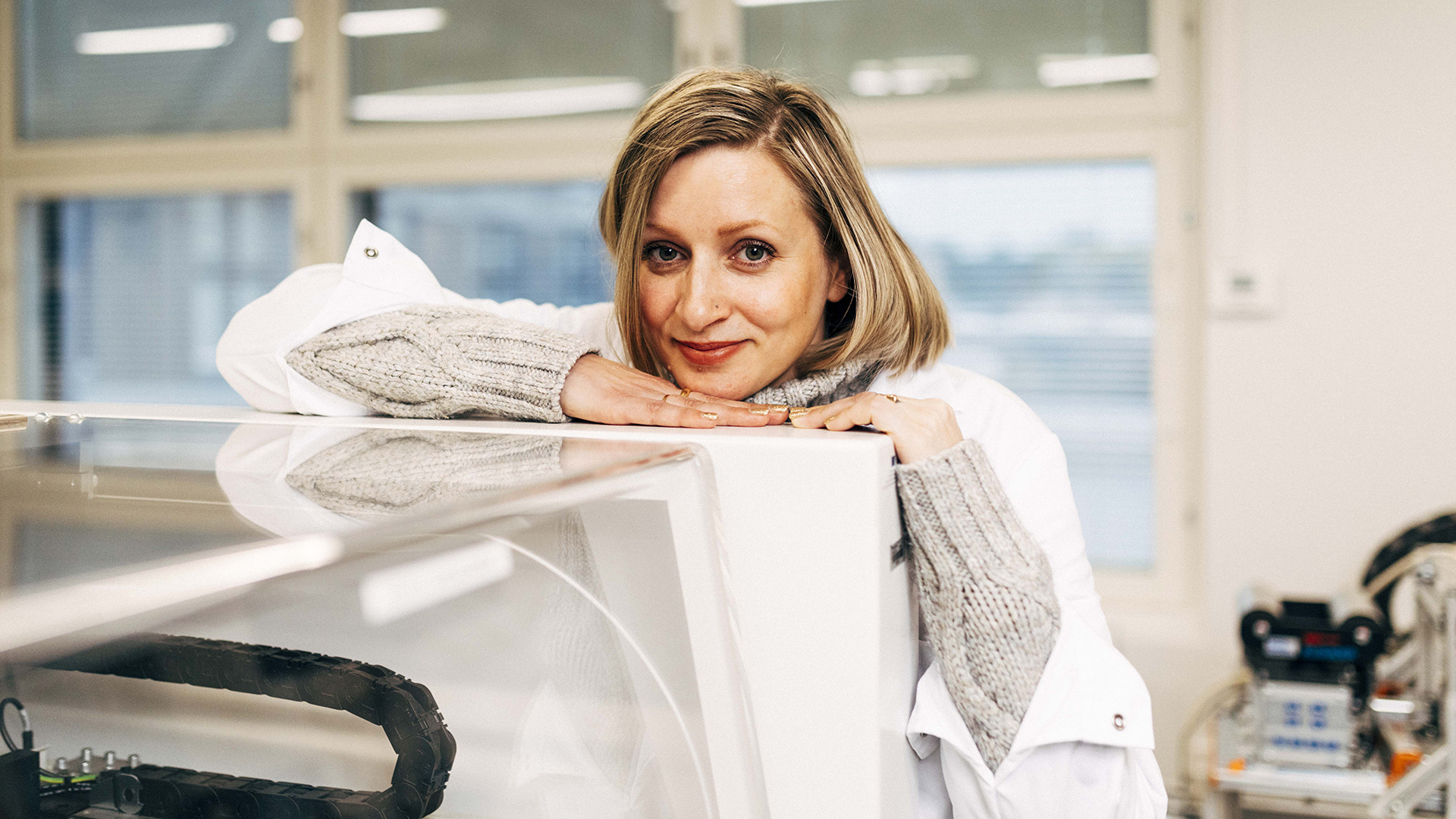17.11.2021
The Master’s Degree in Printed Intelligence offers unlimited opportunities
Késia Ranta, a student in the Printed Intelligence programme, describes her studies as being suitably challenging and interesting. In the future, Késia would like to do research in printed intelligence.

Having graduated as a nurse and worked long as an emergency response centre operator, Késia Ranta applied for the Master’s Degree Programme in Printed Intelligence offered by Oulu University of Applied Sciences (Oamk), because she was looking for a new direction in her career.
– In the future, I would like to have a mobile job, one that I could even take care of abroad, says Késia.
The programme aroused Késia’s interest especially because printed intelligence is very much a future field, which is developing very quickly and does not yet have many experts.
– This is totally different from anything I’ve ever done. What also makes printed intelligence so attractive is the variety of ways in which it can be applied.
Interesting studies
Even though Késia has found her studies occasionally challenging, she has enjoyed them a lot.
– The studies have been suitably challenging. I’m actually a bit surprised with how interesting I’ve found my studies. The instruction has also been of a very high quality.
The degree programme in printed intelligence is mainly offered as online studies, but it also includes a contact teaching period at Oamk’s PrinLab. Késia, who lives in Nurmijärvi, says both the distance studies and the contact teaching period have been well organised.
– Although we complete much of our studies remotely and independently, you can always get hold of the instructors. I enjoyed meeting the other students face-to-face during our contact teaching period and getting the chance to test what we had learned in practice.
Késia has been studying both on study leave and while working.
– During my study leave, I really made a lot of progress in my studies, but I’ve also managed to study fine while working. However, combining work and studies calls for scheduling and motivation.
Késia says she is one of the few in her study group who does not have a background in engineering. Since all the studies in the Printed Intelligence programme are completed in English, Késia first had some trouble with terminology familiar to engineers.
– The terms weren’t familiar to me even in Finnish, so it took me a while to learn them when I first started studying. Later on, however, I’ve noticed that my background gives me the advantage of easily being able to look at things outside the box.
According to Késia, studies in printed intelligence are well suited to experts in many different fields.
– Work with printed intelligence is so creative that the more varied the backgrounds of people entering the field, the greater the opportunities for developing it.
Educating professionals for a future field
After graduating, Késia would like to do research in printed intelligence, and she has also considered continuing her studies.
– I’ve enjoyed studying so much that one alternative is to apply for doctoral studies at the university.
In Késia’s opinion, good English language skills, creativity, systematicity and mathematical intelligence are useful in Oamk’s Printed Intelligence programme.
– However, you learn these things during the studies, so anyone interested in the field who meets the application criteria should definitely apply. You don’t need to speak perfect English, either, even though the learning materials and instruction are in English.
Késia recommends the programme because students are trained to become experts in a field of the future.
– This is a growing field with nearly limitless opportunities. There is need for experts in the field, so you’re bound to find work in the field.